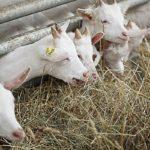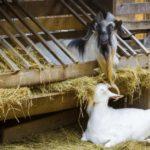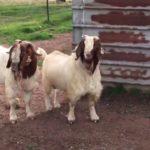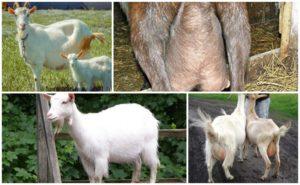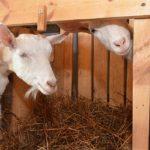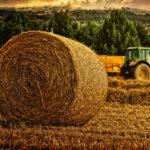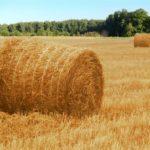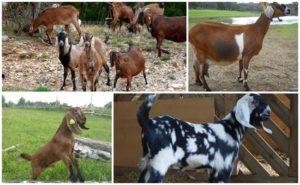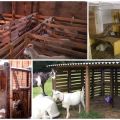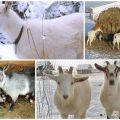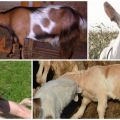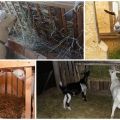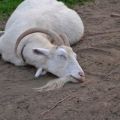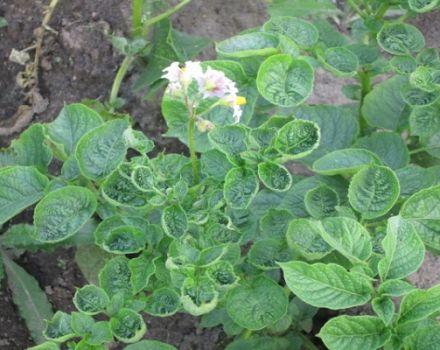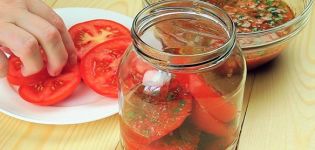How much hay does a goat need for the winter, calculation of the rate for a day and a year, storage rules
In order to calculate how much hay and other nutritional components are needed for harvesting a goat for the winter, it is necessary to understand the nutritional characteristics of the animal and its needs. Goats are easy-to-care animals, and it is not difficult to store food for them. The basis of the diet of these pets is dried or purchased hay.
How much hay does a goat need
Goat breeding is a popular livestock industry. These pets become an irreplaceable part of the economy in areas with a temperate climate in the case of following simple rules of care and feeding.
Daily rate
For the production of nutritious and rich milk and the well-being of the animal, goats need to:
- 4 kilograms - milking individual;
- 6 kilograms - goat;
- 2 kilograms - a kid.
The volume of hay can be diluted with chewing aids, vitamins or cereals.
For winter
For proper nutrition of one individual, 400 to 600 kilograms of hay harvests for the winter period are required. The amount of stocks depends on the weight of the animal, gender and the length of the cold period.

Important! On average, one goat eats 120 kilograms of hay per month (4 kilograms for 30 days). However, when calculating the required stock, it is best to add the extra 100 kilograms on top.
Annual rate
Good animal care and a balanced diet of domestic goats fully pay off with the milk produced. Proper nutrition protects animals from the risks of indigestion and promotes the harmonious development of young animals. During the summer months, goats are grazing and replenish their need for grass while walking. During this period, the enrichment of the diet is aimed at juicy supplements, vegetables and fruits. The total amount of food consumed per goat, on average, is about 1.5 tons.
Important! It has been noticed that when vitamin E is added to the food of goats, the resulting milk becomes softer. Bitterness and sour taste disappear.
How to prepare hay yourself
If the breeder decides to mow and dry hay for winter harvesting on his own, you should pay attention to several rules:
- you need to mow wildflowers before flowering;
- cereals are mowed during earing;
- legumes - at the beginning of the opening of the buds;
- you need to mow on warm days after the dew dries.
Experienced breeders prefer to store hay on their own, as this process contributes to the careful selection of the components of the animal's diet in winter.
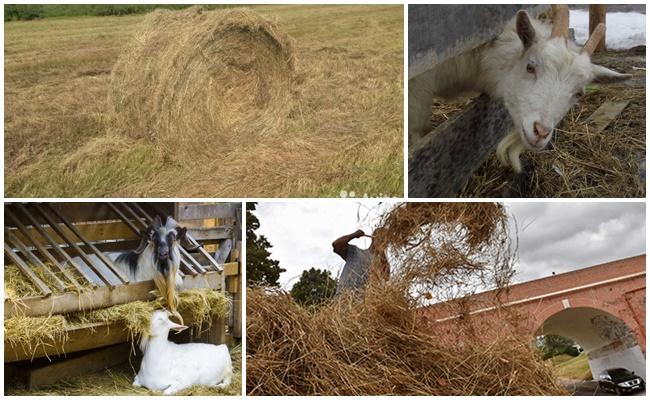
Storage rules
Like other organic harvests, if stored improperly, hay can rot, rot and eventually become unsuitable for goats.
The basic rules for storing hay include:
- Thorough drying.
- Tedding compacted areas during drying.
- Prevents drying out.
- The presence of a spacious hayloft.
- Protection against moisture (rain, snow, damp earth).
- Full natural ventilation.
- Elevation above the ground (wooden logs).
Compliance with these simple rules will allow you to secure the workpieces until next season.
Alternative winter foods and supplements
The nutrition of goats affects not only the general condition of the animal, but also the quality and taste of the milk obtained. In order for the animals to receive the entire set of vitamins and minerals, as well as to strengthen the chewing apparatus, the goat breeder needs to prepare:
- young twigs of trees and shrubs (raspberries, apple, willow, pear, beech, maple, birch, oak, linden);
- willow bark;
- fir branches;
- dry foliage;
- cereals (oats, barley, corn, wheat);
- vegetables, roots (fodder beets, carrots, fresh potatoes, pumpkin, zucchini) - no more than 3 kilograms (for an animal weighing 50 kilograms) per day;
- field herbs (chamomile);
- straw (barley, oat);
- vitamin supplements (check with your veterinarian).
Important! Despite the health benefits of grains, an excess of this product can lead to a rapid increase in animal weight and a decrease in milk production.
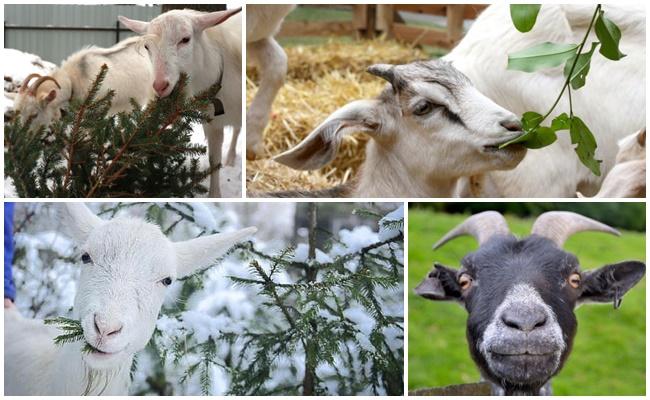
What can not be fed
Goats are not the most demanding animals to care for, but not all plants are suitable for their food.
You cannot take into blanks:
- celandine;
- dope;
- Red clover;
- nightshade;
- wild rosemary;
- milestones;
- lily of the valley;
- cicuta;
- parsnip;
- hogweed;
- lupine;
- ferns;
- hellebore;
- thymus;
- bristle;
- feather grass (tyrsa);
- trailer;
- sprouted potatoes;
- cake of flax, mustard, rapeseed, camelina, rape, hemp.
Care must be taken when choosing plants to feed goats. Otherwise, poisonous plants cause disorders of the gastrointestinal tract or death of the animal.
Important! Disruption of the digestive system of goats is also caused by chaff and husk of cereals, sawdust or sand that gets into the animal enclosure if sanitary conditions are not observed.
